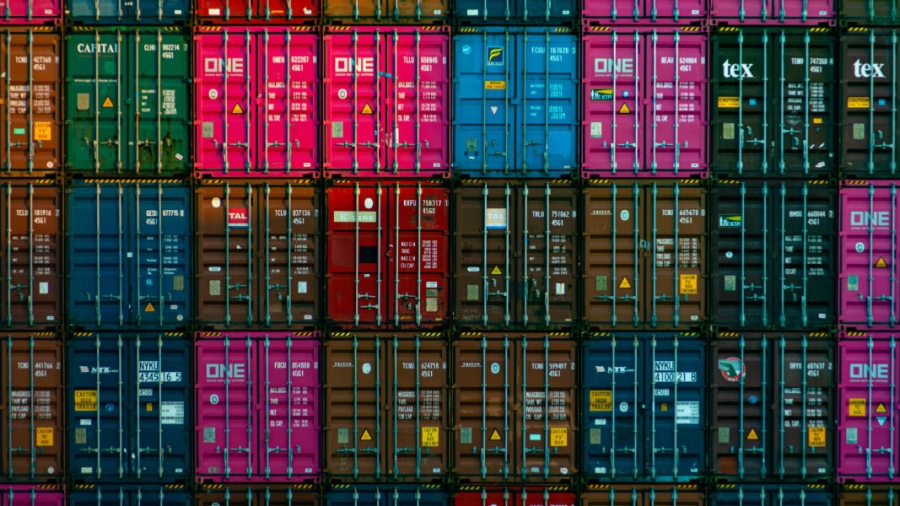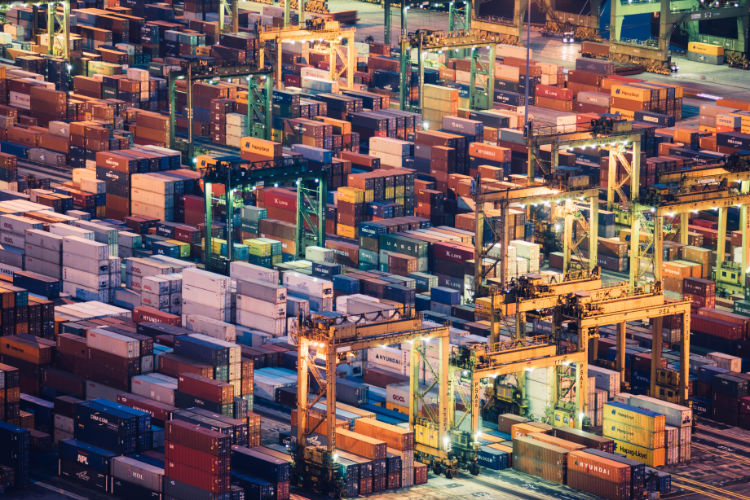People outside of the logistics industry generally don’t give much thought to the shipping containers that carry the goods they use every day. Today, it can be difficult to imagine how much of a challenge it once was to move freight around the globe before the invention of the standard shipping container. Thankfully, innovations continue to push the transportation and logistics industry forward to make international trade even easier than before.
What Is a Standard Shipping Container?
A standard shipping container is a widely used and indispensable vessel made of steel and used to transport goods. Although it doesn’t give the impression of groundbreaking, most shipping containers have standardized dimensions, which makes it easy to load and unload goods across all transport modes. There’s a long history behind the standard shipping container, and of course, as all groundbreaking ideas, it came from an outstanding person.
The First Use of Shipping Containers
Before the first shipping containers were developed, freight was handled manually as breakbulk cargo. Goods traveled via truck from the factory to vessels, warehouses, boats, and other destinations. This method required handling at each stage of the voyage, which caused delays, increased costs, wasted time, and proved increasingly unreliable with an increase in shipping frequency.
Shipping containers were first utilized by companies for combined rail and horse-drawn transport in Britain toward the end of the 18th century. By the 1830s, railroads were carrying containers suitable for other modes of transport. The U.S. Army then used standard-sized small containers during World War II, which helped to speed up the distribution of supplies.
The Invention of the Standard Shipping Container
American Malcolm McLean invented and patented the first standard shipping container in 1956. McLean wasn’t an ocean shipper, but he did own the largest trucking company in the USA at the time. Gradually, McLean came up with his concept on how to shape seamless and efficient intermodal transportation.
When McLean started his trucking company, the standard practice was to load and unload cargo in wooden cases of different sizes. He watched dock workers move and transfer freight and was amazed by the inefficiency. McLean was confident that trucking carriers and shipping companies would gain from a standard intermodal cargo transfer process.
Confident in his effort to change the logistics industry, McLean purchased Pan Atlantic Tanker Company and all its shipping assets. He then started experimenting with improving the loading and unloading of trucks. Eventually, McLean finally came up with what would become the standard shipping container. It’s robust, theft resistant, reliable, and easy to transfer.
In April 1956, the first container ship, the Ideal X, departed from Port Newark and successfully arrived at Houston.
Standard containers were a true revolution in freight transportation and changed international trade in a variety of ways:
- Increased safety: Cargo began traveling sealed and safe in shipping containers, reducing pilfering and damage.
- Reduced manual labor: Containers reduced the work required for loading and unloading, dramatically changing the character of port cities everywhere. Cranes substituted workforce, and ports expanded to accommodate larger ships and loading facilities.
- Increased efficiency: Innovation in the shipping process reduced the expense of international trade and increased its speed by significantly shortening shipping time.
Less than four decades after McLean’s invention, containers transport approximately 90% of the world’s cargo. Containerization has shaped our world. It provides an opportunity for the fast and safe delivery of millions of goods daily. It’s an invention continuing to influence globalization and the global economy.
Evolution of the Standard Shipping Container
From 1956 until today, the standard shipping container has evolved in many ways to meet the expectations of 21st century logistics. Everyone wants an efficient supply chain, and modern-day shipping containers are indispensable. Here are just some of the most prominent ways the standard shipping container has evolved.
Types of Shipping Containers
Standardization is an essential feature of the shipping container, but the design is equally important. Today, shipping containers accommodate all kinds of freight, including perishable produce and dry goods. Further examples of unique products containers are built to carry include:
- Car containers make it possible to transport multiple cars together without damaging the cargo.
- Refrigerated containers allow for transporting temperature-sensitive items such as pharmaceuticals and food.
- Tunnel containers have two sets of doors on either side of the container. Having two doors allows for faster loading and unloading. Most shippers use these containers when they must unload and reload their freight more than once.
Improved Cargo Security
Certainly no one wants their freight stolen, so today’s shipping containers are built to prevent theft. Thanks to Malcolm McLean, standard shipping containers are one of the most secure ways to ship your cargo. Shipping containers have different locks, and today some even have wireless security systems.
Eco-Friendly Shipping
Carbon emissions are a big challenge for the shipping industry to overcome. However, the standard shipping container is one of the industry’s cleaner inventions. Containers are reusable and can last for years transporting hundreds of shipments.
Shipping With BGL
If you’re looking for reliable shipping containers and an even more reliable company to carry your freight, it’s a good thing you’ve found BGL. We manage more than TEU annually through all freight modes. Supply chain efficiency is a priority, so get a quote with us today to expedite all your shipping needs!




